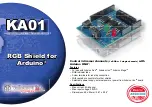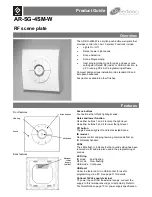
Functional Description
1197
SPRUHE8E – October 2012 – Revised November 2019
Copyright © 2012–2019, Texas Instruments Incorporated
M3 Micro Direct Memory Access ( µDMA)
16.3.6.6 Peripheral Scatter-Gather
Peripheral Scatter-Gather mode is very similar to Memory Scatter-Gather, except that the transfers are
controlled by a peripheral making a µDMA request. Upon detecting a request from the peripheral, the
µDMA controller uses the primary control structure to copy one entry from the list to the alternate control
structure and then performs the transfer. At the end of this transfer, the next transfer is started only if the
peripheral again asserts a µDMA request. The µDMA controller continues to perform transfers from the list
only when the peripheral is making a request, until the last transfer is complete. A completion interrupt is
generated only after the last transfer.
By using this method, the µDMA controller can transfer data to or from a peripheral from a set of arbitrary
locations whenever the peripheral is ready to transfer data.
and
show an example of operation in Peripheral Scatter-Gather mode. This
example shows a gather operation, where data from three separate buffers in memory is copied to a
single peripheral data register.
shows how the application sets up a µDMA task list in memory
that is used by the controller to perform three sets of copy operations from different locations in memory.
The primary control structure for the channel that is used for the operation is configured to copy from the
task list to the alternate control structure.
shows the sequence as the µDMA controller performs the three sets of copy operations. First,
using the primary control structure, the µDMA controller loads the alternate control structure with task A. It
then performs the copy operation specified by task A, copying the data from the source buffer A to the
peripheral data register. Next, the µDMA controller again uses the primary control structure to load task B
into the alternate control structure, and then performs the B operation with the alternate control structure.
The process is repeated for task C.
















































